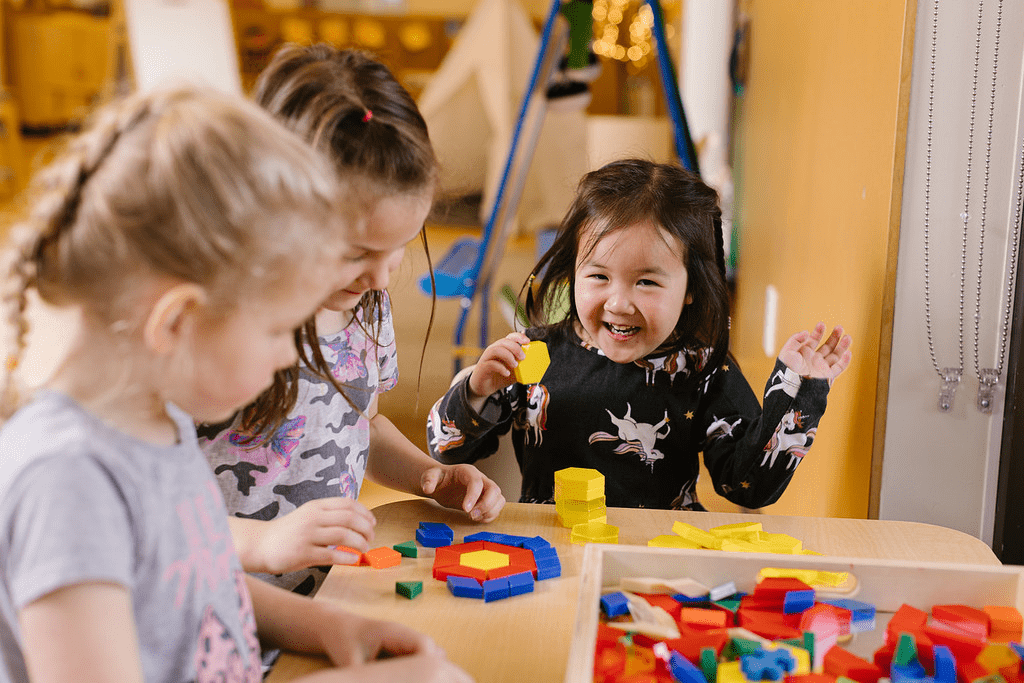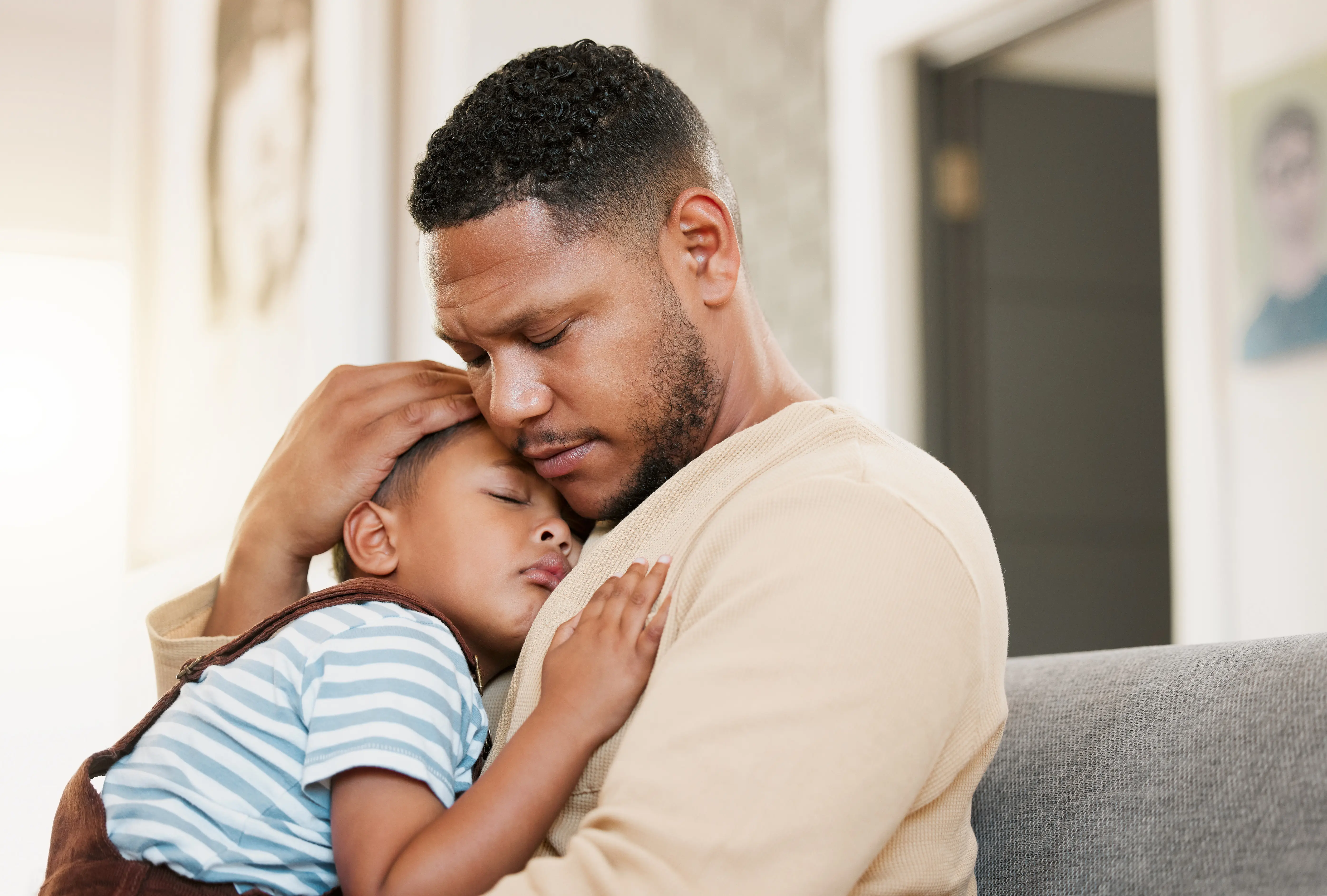The Train Analogy That Will Completely Change How You See Your Crying Child
An Effective Way to Change How You Are Managing Children’s Emotions
This blog post was originally featured here: https://pickanytwo.net/the-train-analogy-that-will-change-how-you-see-your-crying-child/
My 4-year-old was climbing into bed, his face turned away from me and toward the wall, when he asked the question.
“Where’s Glenn?”
His tone made the question sound like an afterthought, but I know better. Glenn is the opposite of an afterthought; he’s the tiger lovey blanket my son has been carting around with him since he was old enough to maintain a tight grasp.
My husband offered to head back downstairs to search, and I absently commented that I actually hadn’t seen Glenn around that evening, which was unusual.
At that, my son slowly turned around to face me but without making eye contact, his mind racing. His eyes were fixed on some background point as his mouth twisted and turned with each darting thought. They met mine only as he realized it, his shoulders straightening and his back growing taller as the panic scaled him.
Finally, the shout: “I left Glenn in the back of Gigi’s car!!!”
Gigi, of course, was one state away by this point, which means we were facing my son’s first night since he was an infant—the first night ever in his little memory—without Glenn curled up in the crook of his arm.
Oh, sure, we’d lost Glenn before, but he’d always been found before bedtime, even if sometimes it required what felt like hours of searching. And then there was the time my son held him out the car window and accidentally let go, so Glenn spent a bit of time playing chicken on the yellow lines of a busy street.
But still, there had never been a bedtime without Glenn.
The initial shock was, of course, followed by electric currents of anger that coursed through my son’s little body. He punched the air and gritted his teeth and screamed, “I WILL NOT SLEEP WITHOUT GLENN! I WILL NOT GO TO BED UNTIL HE’S HERE! I WILL NOT GO TO BED EVER AGAIN!” More punching, more gritting, a few angry flops onto the floor.
At this point, my husband had returned from his futile search and was looking at me for direction. How are we handling this one, mama?
I don’t know if the look I shot back reflected confidence, wisdom, and clarity, but believe it or not, that’s what I felt.
Because right when I needed it most, I remembered the train analogy.
The Life-Changing Train Analogy
The analogy was nothing new, something I’d learned in my own therapy years before I had kids and something we’ve all heard in the form of an overused cliche. Truthfully, I’d always struggled to apply it to my own rush of emotions, but here, with my poor child flopping around on the floor like a fish out of water, it seemed like the only reasonable response.
Difficult feelings are tunnels, and we are trains traveling through them.
We have to move all the way through the darkness to get to the—you knew this was coming!—calm, peaceful light at the end of the tunnel.
It sounds simple, but it’s way easier said than done.
Where Well-Meaning Parents Go Wrong When It Comes to Managing Children’s Emotions
The problem is that we well-meaning parents and caregivers often attempt to intercept our children on their journey through an emotional tunnel. For example, watching my son wrestle with his anger and sadness and fear at not having his lovey, I could easily have said:
It’s only one night. We’ll get him back tomorrow.
We have so many other stuffed animals, just sleep with one of them tonight.
You’ll be fine, I promise. Those would all have been true statements, no doubt, but they would not have been helpful ones.
So often when our kids are struggling with a difficult feeling—sadness, anger, fear, embarrassment, loneliness, guilt—we try to logic them out of it. We explain why they’re overreacting, or how WE know it will turn out just fine in the end. We’re trying to help our children, of course, but if we peel back the layers a bit, I think we’ll find that what we’re really doing is trying to make OURSELVES feel better. Because our children’s pain hurts US so deeply, makes US so acutely uncomfortable.
We’re the ones who want their crying to stop as quickly as possible—not them.
Back to the analogy: If emotions are tunnels and we are trains going through them, then we NEED to keep moving all the way through to the other side.
What we adults often do when facing our own emotional struggles is an attempt to get out of the tunnel early—banging on the sides, ignoring the cavernous echo, and wondering with confusion why we can’t see daylight yet.
Sometimes we squat in the darkness, close our eyes, and just pretend we’re not in a tunnel at all. Everything is just fine, thank you very much. Sometimes we do a whole host of other things—eat ice cream, drink wine, shop online, run marathons, binge-watch Netflix, play games on our phones, or scroll mindlessly through Facebook—to distract ourselves from the fact that we’re in a tunnel in the first place.
Then, when we FINALLY let ourselves scream and wail and bang our fists and crumble onto the floor and have a good cry, we suddenly feel so. much. better. The same goes for our kids. We can’t teach them there’s some secret side exit when there’s really not. There is no way out except through, and it’s our job to guide them there.
That’s why I didn’t say a word to my son. Instead, I just sat next to him as the ripples of anger melted into shaking and sobbing. When I thought it was OK to do so, I started rubbing his back—still without speaking. He kept crying and crying and crying.
As those tears flowed, I realized I had just done what Gordon Neufeld and Gabor Mate call “dancing our children to their tears.” In their book Hold On to Your Kids they write: “…a parent must dance the child to his tears, to letting go, and to the sense of rest that comes in the wake of letting go…[a parent must] come alongside the child’s experience of frustration and provide comfort. The agenda should not be to teach a lesson but to move frustration to sadness…Much more important than our words is the child’s sense that we are with her, not against her.”
With that in mind, I was actually delighted that my son was shaking with sobs because I knew that meant he was traveling through this emotional tunnel rather than getting stuck in it. He cried and he cried and he cried. Until he wasn’t crying anymore.
Until, from his vantage point splayed out on the floor, he caught a glimpse of a nearby book about world-recording-holding dogs, pulled it over, and started paging through it. As if nothing had happened at all. I peeked at the clock. It had been eight minutes.
I decided speaking would be OK now, so I asked my son if he wanted to make a plan. I told him I knew that bedtime tonight would be extra tough, but maybe we could think of some ideas together to help him through it. (Had I suggested such a thing two minutes prior, he would have EXPLODED. But because I waited until his train was through this tunnel, it was fine.)
Without any additional prompting from me, my 4-year-old chose two different stuffed animals to sleep with that night, then asked if we could read two extra books before bed to help make the evening more special. Later, as I kissed him goodnight and he turned onto his side to fall asleep, he said peacefully, “I’m going to be OK tonight.”
Yes, dear son, you are. Because this is where resilience is built. Had I driven an hour each way to retrieve Glenn, we wouldn’t have built resilience. Had I told him over and over again it was no big deal, it’s just one night without one stuffed animal, we wouldn’t have built resilience either. The message there would have been that his pain was invalid and that his struggles weren’t worth being taken seriously. But simply sitting by his side as bumped his way through the tunnel? Allowing him to feel the rush and the panic, and then come up for air all on his own? THAT is building resilience.
So the next time your child is deeply frustrated, angry, or upset, remember what the job of a parent really is.
The job of a parent is to:
- Provide comfort through the frustration.
- Draw out our child’s cleansing tears.
- Show empathy to our child’s struggle.
- Allow the life lesson to be learned naturally—not through preaching.
- Support our child’s journey through the emotional tunnel.
The job of a parent is NOT to get our child to stop crying as quickly as possible. Tears are a sign of parental success, not failure.
So rub your child’s back. Sit with them in silence. Stay alongside them as they chug chug chug through their tunnels of feelings. And be with them when they finally reach the calm, peaceful light at the end.
You May Also Like

Teaching Children Emotional Intelligence

How Actively “Doing” Can Help Preschoolers Learn Best




